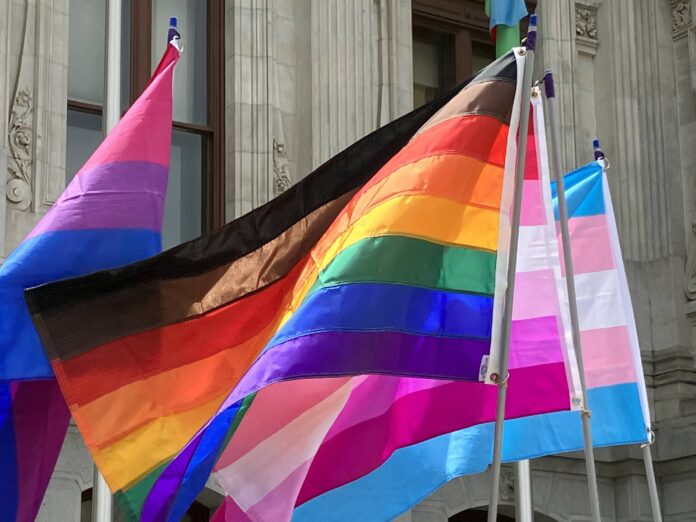The latest Gallup poll finds 7.2% of U.S. adults identify as LGBTQ. But while the data from 2022 show that among older LGBTQ people, statistics remain stable, the poll also reveals that nearly 20% of Gen Z — those aged 19 to 26 — identify as something other than heterosexual or cisgender. The most dramatic finding in the poll is that among Gen Z respondents, two-thirds identify as bisexual.
This latest poll is just slightly higher overall than last year’s poll — up to 7.2% from 7.1%.
The new polling shows that the percentage of adults in the U.S. who identify as lesbian, gay, bisexual, transgender or as non-cishet has risen significantly since Gallup’s initial poll in 2012. The latest data shows an increase to twice the percentage since the 2012 study.
Gallup states that “After showing perceptible increases in 2020 and 2021, U.S. adults’ identification as lesbian, gay, bisexual, transgender or something other than heterosexual held steady in 2022, at 7.2%. The current percentage is double what it was when Gallup first measured LGBT identification a decade ago.”
Gallup says the data are based on aggregated polling data from 2022 Gallup telephone surveys and interviews with over 10,000 U.S. adults. The surveys ask respondents if they identify as lesbian, gay, bisexual, transgender or something else — they can choose from and include multiple identities.
Gallup states that in addition to those identifying as LGBTQ, 86% of adults say they are “straight or heterosexual.” Another 7% chose not to answer the question.
Gallup notes that the predominant feature of the polling is that 4.2% of all U.S. adults identify as bisexual — more than half of LGBT adults.
Among the remainder of LGBT adults, 21% identify as gay, 14.3% identify as lesbian, and 10% identify as transgender.
Five percent of LGBT adults identify as something other than lesbian, gay, bisexual or transgender. In 2022, Gallup added a new feature to the polling. Gallup now records the preferential identities of respondents who said they were both something other than heterosexual and also something other than the previously reported lesbian, gay, bisexual or transgender identities.
Among these polled respondents, most of these people said they were queer, pansexual or asexual. About 1% to 2% of LGBT adults — equivalent to 0.1% of all U.S. adults — prefer one of those identities.
“Queer” signals any orientation or identity that’s not straight: “relating to a sexual or gender identity that does not correspond to established ideas of sexuality and gender, especially heterosexual norms.” “Pansexual” denotes someone who experiences sexual or romantic attraction regardless of sex or gender identity. “Asexual” denotes someone who doesn’t feel sexual attraction to anyone of any gender or orientation.
Within the polling, members of Gen Z — those born between 1997 and 2004 — who were 18 to 25 in 2022, are the most likely subgroup to identify as LGBT, with 19.7% reporting that identity. The rate is 11.2% among Millennials and 3.3% or less among older generations like Gen X, Baby Boomers and the Silent Generation.
Among Gen Z respondents, 13.1% identify as bisexual, 3.4% as gay, 2.2% as lesbian, and 1.9% as transgender. Gallup reports that each one of those percentages is higher than it is for all other generations.
The differences are significant: 66% of LGBTQ people in Gen Z and 62% of LGBTQ Millennials identify as bisexual, compared to 48% of Gen X, 26% of Baby Boomers and 35% of the Silent Generation.
Gallup also reported that the number of bisexual adults relative to other LGBT identities is significantly higher among younger than older age groups. Two-thirds of LGBT individuals in Gen Z identify as bisexual, as do 62% of LGBT Millennials, compared to 48% of Gen X, 26% of Baby Boomers and 35% of the Silent Generation. In the oldest two generations, LGBT people are most likely to identify as gay.
Gallup sums up the polling, noting, “LGBT identification has become much more common in the U.S. in the past decade, though in the past year, the figure has been stable.”
Gallup adds, “With many more younger than older adults seeing themselves as something other than heterosexual, the LGBT share of the entire U.S. adult population can be expected to grow in future years. However, this growth depends on younger people who enter adulthood in future years continuing to be much more likely to identify as LGBT than their parents, grandparents and great-grandparents.”
